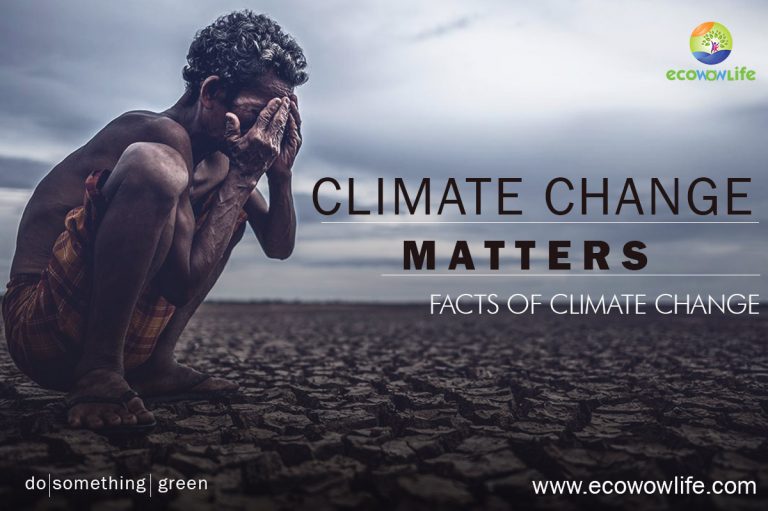
Even a minor increase in global temperatures can have significant impacts on our planet and its inhabitants. Greenhouse Gas has a substantial role in Global warming. Despite this, Climate change still is a topic of debate where the fact of climate change need to be understood as the cause of climate change is exact, but the effects of climate change impact on humans and the ecosystem are severing. The facts of climate change are needed to address by the readers for gaining a basic understanding.
You can have a closer look at the basics of climate change & global warming factors, how and why limiting global warming matters, and the significant climate change facts.
Your must known facts of Climate Change:
In this write up i am trying to cover all the rudimentary facts of climate change such as:
- Is climate change real?
- The leading cause of climate change?
- Effects of climate change.
- Climate change: the debate.
- What are weather and climate; are the same?
- Global warming and climate change; are the same?
- A quick explanation of the Greenhouse Gas effect; how it impacts on human and ecosystem.
- Effect climate change on the economy.
- The problem of Climate change; 3 strategies for the solution
Before we go deep about the facts of climate change i want to brief you some example of climate change-
What is an example of climate change? Some example of climate change that really threatening us:
- Temperatures are rising worldwide because greenhouse gases are trapping more heat in the atmosphere.
- Droughts are staying prolonged and more extreme throughout the world.
- Tropical storms are becoming more devastating due to warmer ocean water temperatures.
- As temperatures rise, there is less likely to have snow peak in mountain ranges and polar areas, and the snow melts faster rate.
- Generally, glaciers are melting faster than before.
- Permafrost is melting and releasing methane into the atmosphere which is a potent greenhouse gas,
- Due to melting ice, glacier sea levels are raising that threatening coastal community and estuarine ecosystems.
Climate change Fact 1. Is climate change real?
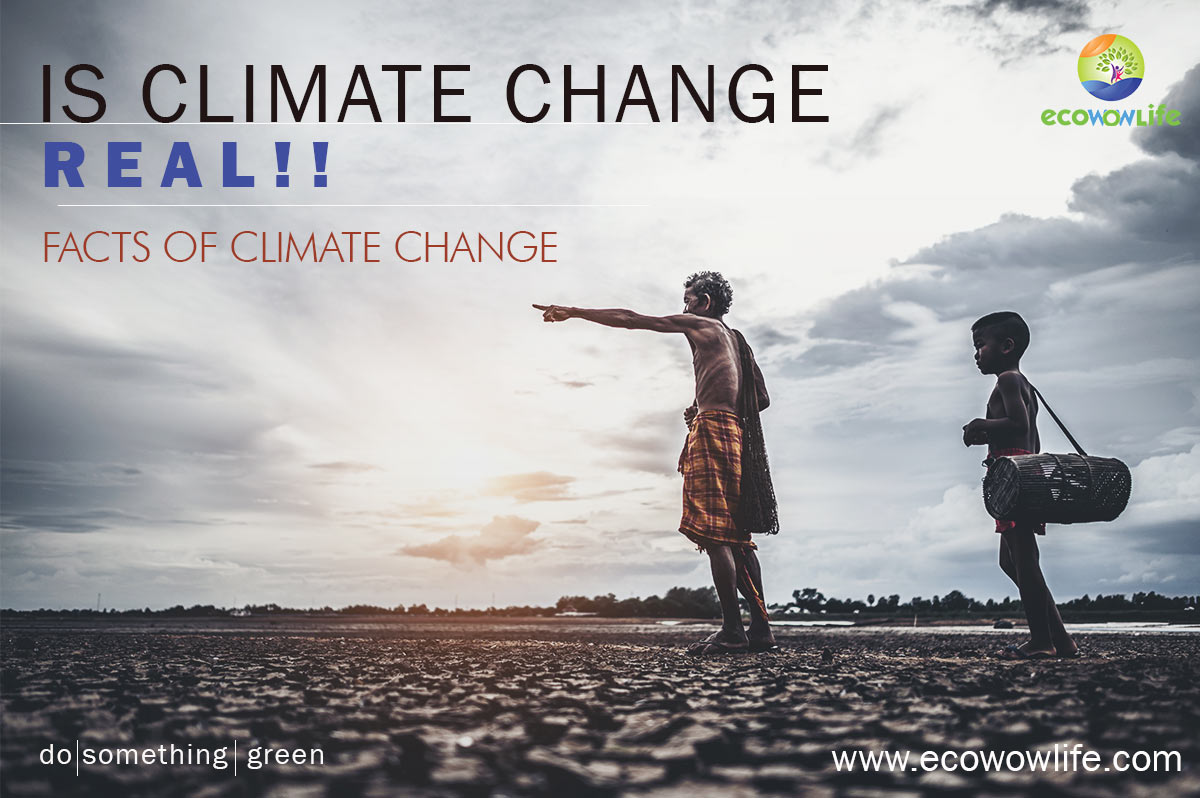
If you consider the definition, the periodic modification of Earth’s climate for the changes in the atmosphere and connections between the atmosphere and other geographic, geologic, chemical, and biological, and factors within the Earth system is called Climate change.
All living things are prone to respond with climate and changes in the climate, even if these changes are subtle and short-term. Some of the most evident examples include the shedding of leaves by flowering plants when water availability is low and shelter-seeking behaviors and expectancy in animals in response to colder or drier conditions.
It gives the impression that life on Earth is adapted to survive a changing climate to some extent, and this is evidence that climate change, but our understanding of climate throughout our lifetimes, along with scientific facts, also proves that climate change is happening.
Now the question will arise; is climate change real? The natural phenomena will establish that it is, but this is not the entire story. Human actions also affect climate, and consent of scientists are sure that the impact of these activities is playing a vital role in determining what form Earth’s climate takes.
Climate change Fact 2. The leading cause of climate change:
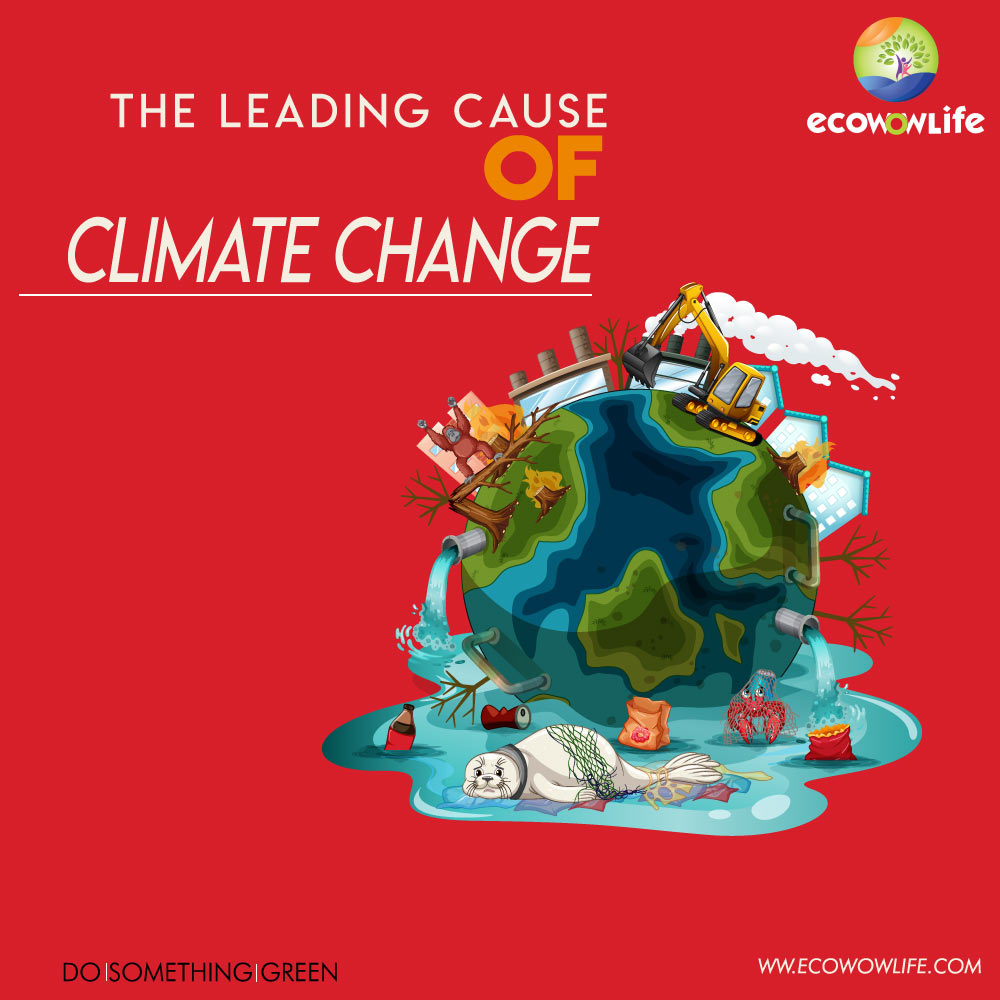
Climate change is undoubtedly occurring and is almost certainly due to human activity; it is the leading cause of climate change. People are burning fossil fuels and convert their land from forests for cultivation. Since the starting of the Industrial Revolution, people have consumed more and more fossil fuels and changed massive areas of land from forests to farmland.
Burning fossil fuels produces carbon dioxide, a greenhouse gas. It is called a greenhouse gas because it creates a “greenhouse effect.” The greenhouse effect makes the earth warmer, just as a greenhouse is more temperate than its surroundings.Carbon dioxide is the leading cause of human-induced climate change.
It stays in the atmosphere for a very long period. Other greenhouse gases, such as nitrous oxide, stays in the atmosphere for a long time. Other substances only produce short-term effects.
Not all substances produce warming. Some, like certain aerosols, can provide cooling.
Do humans produce methane?
Humans are a more prominent source of climate-altering methane; it’s not only single sources but also global population standards. When we consider forecasting global warming, methane is an unpredictable, menacing character. The greenhouse gas is 28 times more potential at trapping heat than carbon dioxide over 100 years.
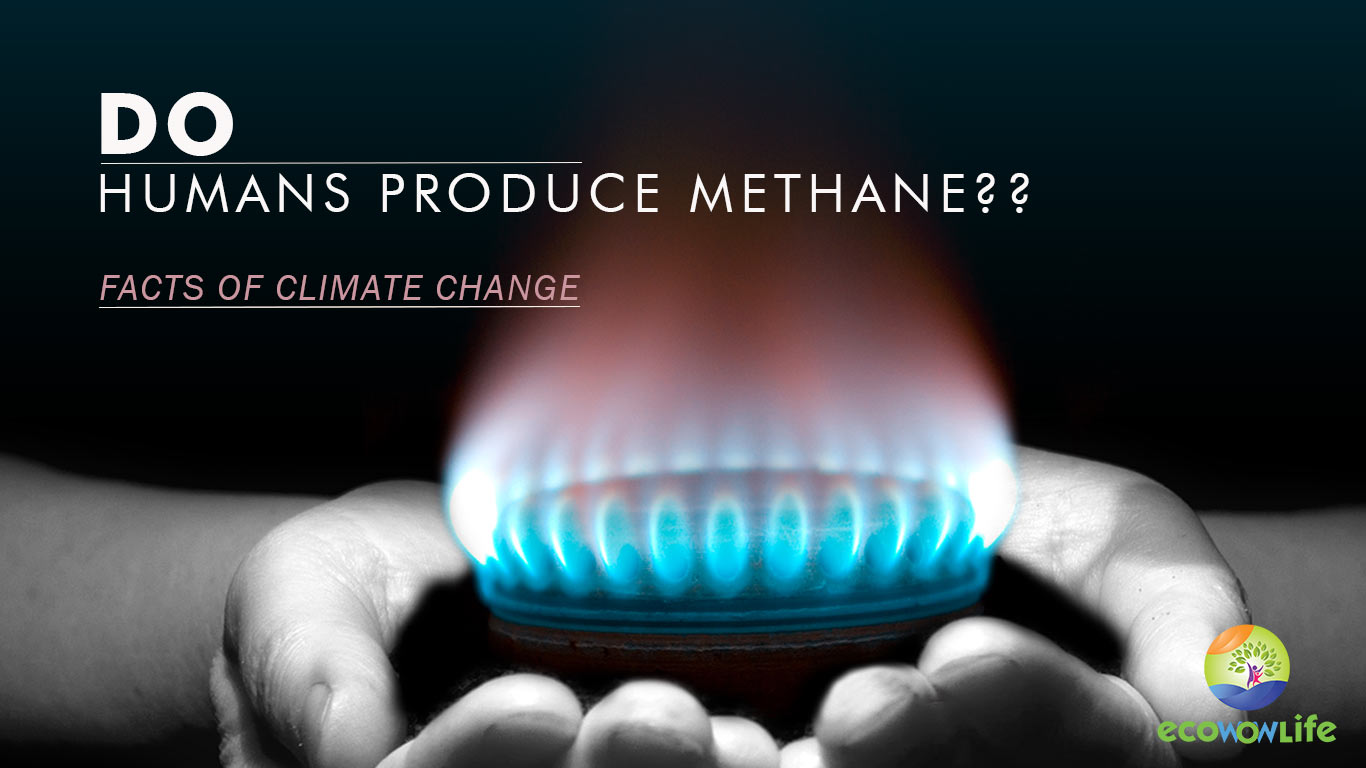
Anyway, it’s produced by intestinal bacteria called methanogen bacteria. There are others that ‘eat’ it. So it’s not human, but a life forms in our gut….which variants of life in the ‘wild’ anyway and decay plant matter and biomass in general into various compounds. So whether or not you eat the plants, they’ll decay into some methane, etc. You interrupt or accelerate the cycle, no net gain, and no net loss. Isn’t life beautiful?
03 Effects of climate change
Climate change poses an ultimate threat to places, species, and people’s livelihoods. Things that we rely upon and value — water, energy, wildlife, transportation, agriculture, ecosystems, and human health — are facing the effects of a changing climate; its affecting every country in every continent. They’re creating extraordinary challenges for millions of people already burdened with poverty and domination.
The increased occurrence and intensity of threatening weather events like wildfires, hurricanes, and droughts pose a threat to the world’s food supply jeopardize their livelihoods by driving people from their homes, separated from families. And all of these effects escalation the peril of conflict, poverty, and hunger.
04 Climate change: the debate
While the agreement among nearly all scientists, scientific organizations, and governments is that climate change is real and is caused by human action, but surprisingly a small minority of voices questions the validity of such declarations and poses doubt on the preponderance of the evidence.

Climate change deniers commonly claim that current changes accredited to human activity can be seen as part of the natural differences in Earth’s climate and temperature, and that it is tough or impossible to establish a straight connection between climate change and any other single weather event, such as a hurricane and droughts. Every year the number of natural disasters is increasing at a very alarming rate.
While the latter is usually real, decades analysis of data backing the certainty of climate change—and the human influence in this process. By far, economists agree that acting to decrease fossil fuel emissions would be remarkably less costly than facing the consequences of not doing so.
05 What are weather and climate; are the same?
The weather is the current atmosphere of a place, regarding the amount of sun, the temperature, the humidity, and more. Weather is also very different in different locations and is changing every day. You can relate Climate to weather; however, it is the average weather of an area over a long period. Specifically, it refers to a more significant shift, in simple words, across the entire planet.
For the last 4.5 billion years, Earth has experienced many ice ages and periods of the tropical climate. From the Industrial Revolution, average temperatures have risen marginally.
The weather of the day could be the same as the climate of the region, but it’s not always the case. This is why the weather is used to determine the climate (after observing the most common conditions). If you consider main difference between the two that is the weather is recorded day to day and changes from day today. The climate is something that should remain the same for an area.
This is the average weather. So, for the majority, the weather and the climate should be approximately the same. So, when the weather changes, this is normal, however, when climate changes and changes at an accelerated rate, this is not good. For example, if it is sunny and warm one day, then the next day it is cold and rainy, this is just weather changes. However, if the climate is average temperatures in 68F and overcast, and when the weather starts staying at a warmer temperature for a prolonged time, this is climate change, which is usually regarded as something wrong.
In short, we can draw a difference between Weather & Climate is;Weather- Weather is the way the atmosphere is behaving, mainly concerning its effects upon life and human activities.
06 Global warming and climate change; are the same?

Global Warming is the ongoing warming of the Earth. This includes the atmosphere, the surface, and the oceans. In a simple word, it is the average temperature of the Earth. The causes of global warming happen when carbon dioxide and other pollutants collect in the atmosphere. They get trapped in the atmosphere and stay on the surface and keep the Earth(s temperature warmer.
Climate change is the shift in weather patterns, precipitation, and wind over long periods. This also includes the changing lengths and types of seasons that are in the area.
However, if the climate were to change and get warmer, the winters wouldn’t be as long, or they wouldn’t be as cold.
Other than natural changes with the Earth, many factors go into climate change. Right now, the Earth is experiencing climate change due to increased Carbon dioxide, methane gas, nitrous oxide, and other gases. ).
If you consider main difference between the two term that is, while they both refer to global changes in regarding the state of the Earth, global warming only refers to the temperature.
In contrast, climate change includes changes in weather and seasons. These terms are both very inter-related because global warming causes the climates to change. If global warming increases, then climate change will also increase. As the Earth’s average temperature is increasing, climate change is also increasing.
7 A quick explanation of the Greenhouse Gas effect; how it impacts on human and ecosystem
The greenhouse gas effect is the exchange of incoming and outgoing heat that warms and cools the Earth. An excellent example of this phenomenon is a car on a warm day. If the car’s windows and doors are all closed, and the car sits out in the hot sun, the heat in the car will stay in the car, thus making the car even hotter.
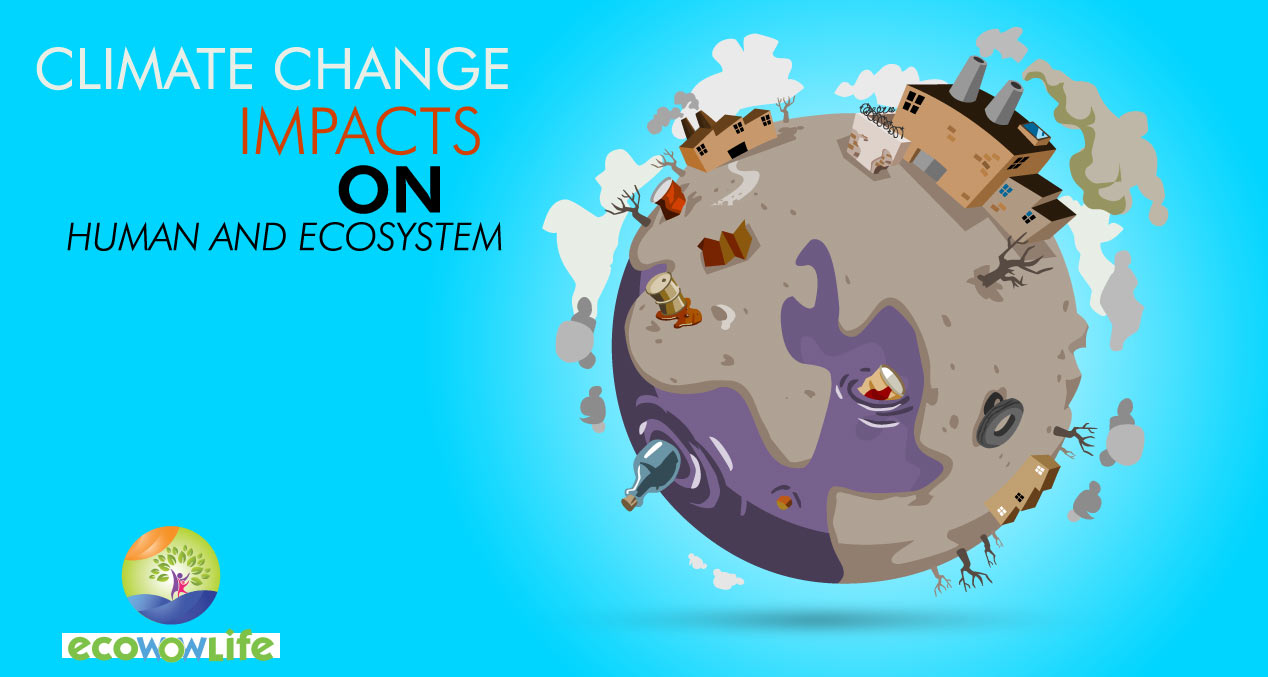
Then, when the user returns to their car, they experience that sitting back inside of the car, it is even hotter. This perfectly explains what happens to the Earth with the increase of greenhouse gases in the atmosphere. The Earth’s surface becomes warmer, and thus, the climate increases. The greenhouse gases are water vapor, methane, nitrous oxide, and other gases.
This is bad for the Earth because it melts ice caps and makes for extreme weather. This makes droughts happen more frequently. This is only one of many reasons why this phenomenon is terrible. It completely changes the ecosystems, and it impacts humans.
Sea levels rise, and the seasons change as well; increased ocean acidification and habitats will be destroyed, driving certain species into extinction.
The effects on humans range from pollutants affecting our health to more infectious diseases and making the air we breathe dirty. Going back to the example of the hot car in the sun, the car is sticky and has a lot of ‘dirty’ air. That is basically what is happening to our Earth on a larger scale, and we can’t open a window to let the hot air out. The greenhouse gas effect prevents all that heat from getting out of the atmosphere.
08 Effect climate change on the economy
Climate change is the long-term seasonal weather patterns. It’s caused by global warming. When we consider a global perspective, global warming affects the geography within which the global economy operates. It changes growth zones. It changes shorelines. It changes places where humans will feel comfortable living.
Also, if humans decide to do anything about it, it will change the way industry, and people use fossil fuels. The global economies will tremendously be hampered as temperatures rise.
- Damage of property and infrastructure: Sea-level rise, floods, droughts, wildfires, and extreme storms require tremendous repairing work for essential infrastructures such as homes, roads, bridges, railroad tracks, airport runways, power lines, dams, and seawalls.
- Lost productivity: Disturbances in daily life associated with climate change can mean lost work and school days, transportation, agriculture, fisheries, energy production, and tourism. Severe rainfall events and snowstorms can delay the planting and harvesting, cause power outages, delay any traveling, and otherwise make it problematic for people to go about their daily business activities. Climate-related health risks also cause the reduction of productivity, such as when extreme heat curtails construction, or when more potent allergies and more air pollution lead to lost work and school days.
- Mass migration & security: Global warming is expected to increase the number of “climate refugees”; people who are forced to leave their household because of flooding, drought, or other climate-related disasters. Mass movements of people and social distractions may lead to severe civil unrest, and might even serious military intervention and other unintended consequences.
- Coping costs: Societies now finding ways to prepare and cope with some climate impacts—provided that we do not let our carbon emissions continue relentlessly. However, even a partial calculation of these measures suggests that coping is likely to be more & more costly steps to reduce carbon emissions, thus decreasing associated climate impacts.
09 The problem of Climate change; 3 strategies for the solution
The big question of climate change in the increased amount of carbon dioxide in the air. The first way to address this issue and to decrease carbon dioxide would be to have climate mitigation. Climate mitigation involves using different technologies and perhaps using renewable resources and energy to prevent greenhouse gases from getting into the environment. This brings up the point of carbon mitigation. This concept goes hand in hand as the example given in the notes was to use nuclear power plants instead of coal plants. Nuclear plants do not emit any carbon dioxide for one. The carbon that is emitted from a typical coal plant needs to be captured and stored elsewhere (preferably in the ground). This is what carbon mitigation is; it is taking carbon and storing it underground so that it does not go up into the atmosphere. This is also called carbon capture or sequestration.
Another step to take would be Adaption. Adaption is when a country changes its way of life to help make for a better future. The example would the new design of buildings and houses; those are higher because they anticipate the water levels to rise. Another example might be the cultivation of drought or salinity-resistant crops in areas that receive less water or excess saline.
The final way to address this problem is Geo-engineering. This is a debatable solution. This one was a little confusing, and some of the ideas were pretty crazy! For example, humans can try and manipulate the Earth’s energy balance. Instead of controlling or trying to change carbon dioxide, one could change the amount of light on Earth. Why alter the light? Because it can keep the Earth cooler and perhaps neutralize the impact of global warming. Another idea would be to make a pseudo volcano. Volcanoes cool the Earth because of their debris.
Concluding Discussion About Facts of Climate Change :
It is exciting to know about the potential solutions for helping to cool the Earth off and reduce carbon dioxide. We know that using renewable resources and alternative energy sources that didn’t emit pollutants or carbon dioxide. We may have little idea about geoengineering was even going on in the world.
Still, the Japanese used it with their buildings to prevent building damage during their Tsunamis; this great solution that can apply in this situation. One other point that stuck anyone was the actual conflicts and problems that arose between countries because of this phenomenon. As the climate changes and water levels change, China builds dams to prevent these changes from occurring.
However, the problem and the facts of climate change here is that subcontinental country like India and Bangladesh don’t receive the water they need; thus, issues arise between these countries. Water changes may not affect countries like this. We may think of the ice caps melting and polar bears and penguins.
It is interesting the part about opinion and when two countries, America and China, try and dispute about who emits more carbon dioxide. The points that were brought up in this write up were very valid in a sense. For one single Chinese person, they emit less than one American. The problem here is, the population of China is much larger than the American population, so China ends up releasing more carbon dioxide into the air. So the two countries stand at a ‘stand-off’ as to who needs to make a difference.